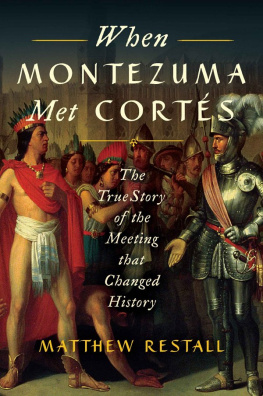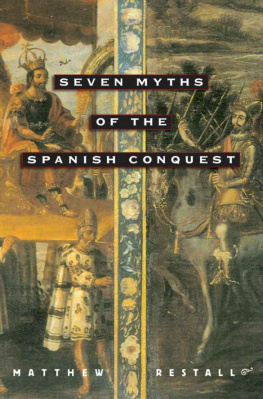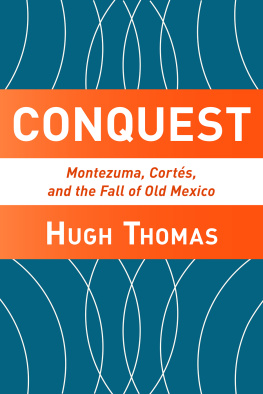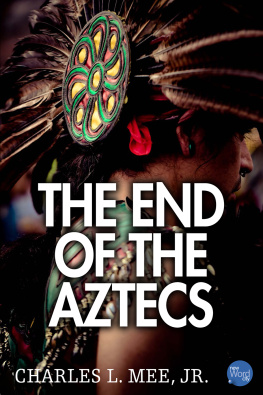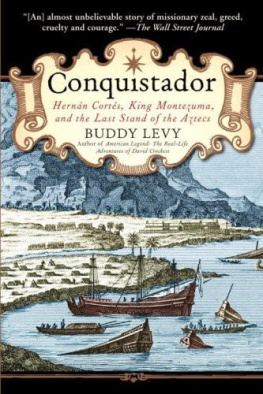Matthew Restall - When Montezuma Met Cortés: The True Story of the Meeting that Changed History
Here you can read online Matthew Restall - When Montezuma Met Cortés: The True Story of the Meeting that Changed History full text of the book (entire story) in english for free. Download pdf and epub, get meaning, cover and reviews about this ebook. year: 2018, publisher: HarperCollinsPublishers, genre: History. Description of the work, (preface) as well as reviews are available. Best literature library LitArk.com created for fans of good reading and offers a wide selection of genres:
Romance novel
Science fiction
Adventure
Detective
Science
History
Home and family
Prose
Art
Politics
Computer
Non-fiction
Religion
Business
Children
Humor
Choose a favorite category and find really read worthwhile books. Enjoy immersion in the world of imagination, feel the emotions of the characters or learn something new for yourself, make an fascinating discovery.
- Book:When Montezuma Met Cortés: The True Story of the Meeting that Changed History
- Author:
- Publisher:HarperCollinsPublishers
- Genre:
- Year:2018
- Rating:3 / 5
- Favourites:Add to favourites
- Your mark:
- 60
- 1
- 2
- 3
- 4
- 5
When Montezuma Met Cortés: The True Story of the Meeting that Changed History: summary, description and annotation
We offer to read an annotation, description, summary or preface (depends on what the author of the book "When Montezuma Met Cortés: The True Story of the Meeting that Changed History" wrote himself). If you haven't found the necessary information about the book — write in the comments, we will try to find it.
Matthew Restall: author's other books
Who wrote When Montezuma Met Cortés: The True Story of the Meeting that Changed History? Find out the surname, the name of the author of the book and a list of all author's works by series.
When Montezuma Met Cortés: The True Story of the Meeting that Changed History — read online for free the complete book (whole text) full work
Below is the text of the book, divided by pages. System saving the place of the last page read, allows you to conveniently read the book "When Montezuma Met Cortés: The True Story of the Meeting that Changed History" online for free, without having to search again every time where you left off. Put a bookmark, and you can go to the page where you finished reading at any time.
Font size:
Interval:
Bookmark:
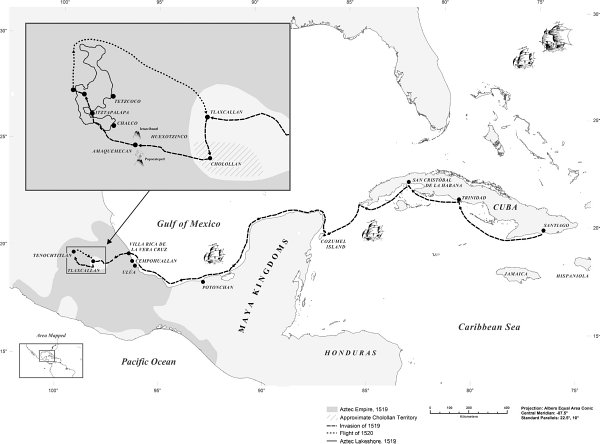
To
all the
Catalinas
Contents
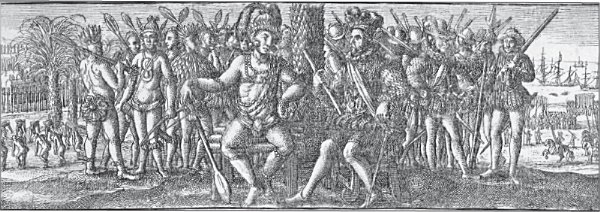
MEETINGS. This engraving ran as a banner across the top of the first page of the first chapter of John Ogilbys great America: Being an Accurate Description of the New World, first published in 1670 in London. The image lacked a title (Meetings is my invention), nor were those portrayed identified by name; for this is a generic representation of Native American and European leaders, armies, cultures, and of the supposedly peaceful meeting of civilization with barbarism.
Courtesy of the John Carter Brown Library at Brown University.
The Conquest of MEXICO is one of the greatest Subjects in all History.
Opening line of the preface to the 1724 English edition of Antonio de Solss History of the Conquest of Mexico
W HAT MAKES THE C ONQUEST OF M EXICO SO GREAT A SUBJECT? There is no shortage of answers to that question. For half a millennium, the story of the invasion of the Aztec Empire by Spanish conquistadors has consistently inspired and fascinated writers and readers, playwrights and audiences, painters and filmmakers. For many, the storys greatness has religious, political, or cultural foundations. For others, the tale is worth telling again and again because it is simply a ripping good yarn.
In contrast, and somewhat perversely, I have written this book because I believe the Conquest of Mexico is not great; at least, not in the sense that it has overwhelmingly been seen for the past five centuries. I have therefore tried to make this book more than just another telling of the same story. The story is told, to be sure, but the book is more concerned with how and why so many have seen it as one of the greatest Subjectsand how wrong they have been. That is a bold conceit, but it has a purpose. Whether you know nothing at all about Aztecs and conquistadors, or you are an expert on them, this is intended as a book for you. Because in the end I hope to persuade everyone who turns these pages that adjectives other than greatestmonumental but misunderstood, dramatic yet distorted, tragic not triumphalare better applied to this history. And because Im challenging the superlative nature of the Conquest (and the conquistador captain most famously associated with it), I imply that such adjectives might also be applied to other histories, if not to all History. After all, the Spanish-Aztec meeting is a central chapter in the larger story of the European invasion of the Americas, leading to the transformation of global history and the making of todays world.
Before beginning, some explanations, scene-settings, and a timeline of key events may be useful.
I use the terms Aztec, Mexica (pronounced mesh-EE-ka), and Nahuas (NA-wahs) to refer to specific groups of people within the Aztec Empire. Some scholars refer to the empire as the Triple Alliance, in order to emphasize the roles played in the empires creation and maintenance by its three dominant cities: Tenochtitlan (the city of the Mexica, and the empires great island-capital), Tetzcoco (an equally splendid lakeside city), and Tlacopan (smaller but also significant); I use the phrase too (sometimes as the Triple Alliance of the Aztec Empire). Further explanation of ethnic terminology is included in the Appendix, along with a diagram aimed at helping those more visually oriented (I am one of you).
With respect to the names of the books central protagonists, I follow sixteenth-century usage and call Hernando Corts just that, although Fernando is more accurate. He was never called Hernn, which is a modern rendering (Cortez is forgivable as an English version that goes back to the mid-sixteenth century). Although I follow conventional Spanish spellings for Spanish personal names and toponyms (for example, Velzquez), I do not put Spanish accents on Nahua ones (for example Tenochtitln and Cuauhtmoc have accents in Spanish, but not in English; besides, their pronunciation in Nahuatl is uninflected).
As for the emperor of the Aztecs, it was tempting to render his name as accurately as possible, as Moteuctzomatzin (pronounced, roughly, moh-teh-ook-tsoh-mah-tseen). But for the ease of the reader, I chose Montezuma. It is a convenient, familiar shorthand (like Aztec) that originated in Spanish, English, and other languages in the late sixteenth century (perhaps even earlier). An early variant was Moctezuma, the conventional form in modern Spanish, perfectly acceptable in English too.
A third person whose name requires some explanation is Malintzin. The original Nahua name of this interpreter to the Cortsled invasion force, or company, is unknown, but Spaniards renamed her Marina. The importance of her role gave her a status that justified her soon being given the honorific -tzin in Nahuatl. In Spanish, she received the equivalent, the doa prefix. As a result, she was variously called doa Marina, Malintzin (as Nahuas tended to turn an r to an l), and Malinche (a Hispanization of Malintzin).
Corts, Montezuma, and Malintzin are three of the sixteen Spanish and Nahua protagonists in the Spanish-Aztec War whose short biographies I have included in the Appendix. You may find it helpful to refer to those biographies when Aztecs like Cacama and Cuauhtemoc, and conquistadors like Ordaz and Olid, appear and then reappear in the chapters to follow. I have also created a kind of family tree, which I have called a Dynastic Vine (in the Appendix), that shows how kinship and marriage tied together the branches of the Aztec royal family in Tenochtitlan and Tetzcocoand then tied them to Spanish conquistadors.
1428
- Foundation in the Valley of Mexico of the Triple Alliance of the Aztec Empire (centered on Tenochtitlan, Tetzcoco, and Tlacopan)
144069
- The first Montezuma (Moteuctzoma Ilhuicamina) rules as huey tlahtoani of Tenochtitlan (i.e., as Aztec emperor)
1468
- Birth of the second Montezuma (Moteuctzoma Xocoyotl); Axayacatl, Montezumas father, rules as huey tlahtoani until 1481; he and two of his brothers head a generational cohort that will rule until the younger Montezuma takes the throne in 1502
148186
- Tizoc, Montezumas uncle, rules as huey tlahtoani
148292
- War of Isabella, queen of Castile, against the Moorish kingdom of Granada, ending with Boabdils surrender to her and Fernando, king of Aragon
1486
- Ahuitzotl, uncle and predecessor to Montezuma, elected huey tlahtoani
149293
- First voyage, under Columbus (Cristbal Coln), to reach the Caribbean and return to Europe
149396
- Second Columbus voyage resulting in first Spanish colony in the Indies, on the island of Hispaniola (todays Haiti and Dominican Republic)
1502
- September 15, Montezuma elected huey tlahtoani
150309
- Series of Aztec conquest campaigns in Oaxaca and other southern regions
1504
- Corts, age nineteen, arrives in Hispaniola; Queen Isabella dies (her four-year-old son, Carlos, will ascend to the thrones of Castile and Aragon when King Fernando dies in 1516)
1511
- The Spanish viceroy in the Indies, Columbuss son Diego Coln, appoints Diego Velzquez to invade and govern Cuba
1515
- Nezahualpilli, the tlahtoani (king) of Tetzcoco, dies and is succeeded by Cacama (with his brother Ixtlilxochitl in revolt)
Font size:
Interval:
Bookmark:
Similar books «When Montezuma Met Cortés: The True Story of the Meeting that Changed History»
Look at similar books to When Montezuma Met Cortés: The True Story of the Meeting that Changed History. We have selected literature similar in name and meaning in the hope of providing readers with more options to find new, interesting, not yet read works.
Discussion, reviews of the book When Montezuma Met Cortés: The True Story of the Meeting that Changed History and just readers' own opinions. Leave your comments, write what you think about the work, its meaning or the main characters. Specify what exactly you liked and what you didn't like, and why you think so.

